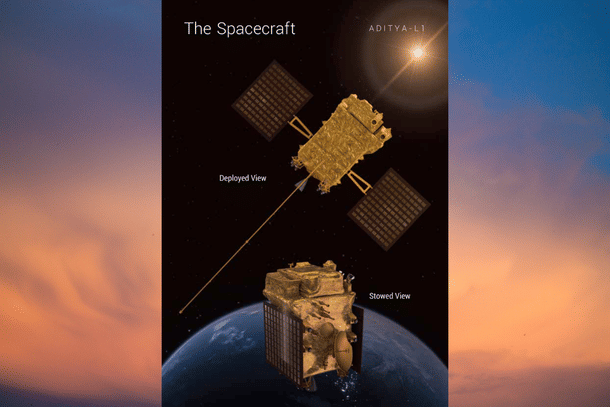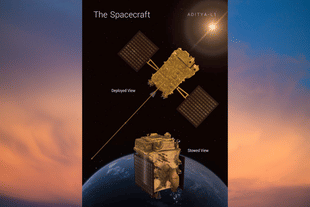Science
India Looks Sunward After Moon Landing Success: Aditya-L1, India’s First Space-based Solar Mission, To Launch Before Noon On 2 September
Karan Kamble
Aug 28, 2023, 04:21 PM | Updated 04:21 PM IST
Save & read from anywhere!
Bookmark stories for easy access on any device or the Swarajya app.


After accomplishing extraordinary lunar feats, India is now turning its gaze towards the solar side of things.
The Indian Space Research Organisation (ISRO) has set a date for the launch of Aditya-L1 — India’s first space-based observatory dedicated to the study of the Sun.
A polar satellite launch vehicle, specifically the PSLV XL rocket, will lift off with the Aditya-L1 spacecraft from the Satish Dhawan Space Centre-Sriharikota Range (SDSC-SHAR) at 11.50 am on Saturday, 2 September 2023.
As part of the mission, ISRO will send a spacecraft about 15 lakh kilometres away from Earth, which is nearly four times the distance to the Moon, covered recently during July and August.
To get to its destination in space, referred to as the Lagrange point 1, or L1, of the Sun-Earth system, Aditya-L1 will first be placed in low-Earth orbit and then subsequently in increasingly elliptical orbits before the firing of the onboard propulsion launches the spacecraft towards L1.
Ultimately, the solar probe will be injected into a large halo orbit around L1. From Earth to L1, Aditya-L1’s journey will take about four months. (The James Webb Space Telescope is in an orbit around Lagrange point L2.)
“A satellite placed in the halo orbit around the L1 point has the major advantage of continuously viewing the Sun without any occultation/eclipses,” ISRO says. “This will provide a greater advantage of observing the solar activities and its effect on space weather in real time.”
The Aditya-L1 mission seeks to enable a deeper understanding of the Sun, including such aspects as coronal heating and solar wind acceleration, coupling and dynamics of the solar atmosphere, solar wind distribution and temperature anisotropy, and initiation of coronal mass ejection, flares, and near-Earth space weather.
Seven payloads will piggyback on Aditya-L1 for the purpose. Four of them will carry out remote sensing of the Sun, while the other three will carry out in-situ observation.
“Using the special vantage point L1,” explains ISRO, “four payloads directly view the Sun and the remaining three payloads carry out in-situ studies of particles and fields at the Lagrange point L1, thus providing important scientific studies of the propagatory effect of solar dynamics in the interplanetary medium.”
The remote sensing payloads are the Visible Emission Line Coronagraph (VELC), Solar Ultraviolet Imaging Telescope (SUIT), Solar Low Energy X-ray Spectrometer (SoLEXS), and High Energy L1 Orbiting X-ray Spectrometer (HEL1OS).
The three payloads carrying out in-situ observations are the Aditya Solar wind Particle Experiment (ASPEX), Plasma Analyser Package For Aditya (PAPA), and Advanced Tri-axial High Resolution Digital Magnetometers.
The Aditya-L1 mission partners are the Indian Institute of Astrophysics (IIA Bengaluru), the Inter-University Centre for Astronomy and Astrophysics (IUCAA Pune), Physical Research Laboratory (PRL Ahmedabad), and ISRO.
Karan Kamble writes on science and technology. He occasionally wears the hat of a video anchor for Swarajya's online video programmes.





